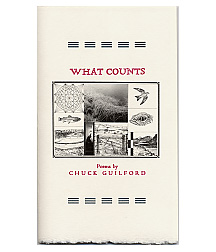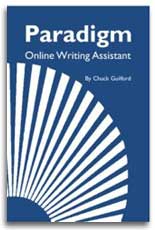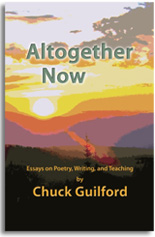Beginnings serve two important purposes. The first is to get you started writing. The second is to get your readers started reading. Early in your writing you're concerned more with the first purpose: getting off to a good start, maybe with enough push to carry you into the heart of the essay. Yet the beginning that gets you going won't always be best for getting readers involved. That's okay. You can take care of that later, after you've seen how the essay is taking shape.
The important thing at first is to start writing. Remember, those first words you write may never be seen by anyone but you. Any starting point can be an entry into your writing process.
Just like entering a lake for a swim, there's no best way to begin. Some people test the water and wade in slowly. Others just plunge right in and start splashing away. Either way, you get wet.
A particular word or phrase—"sheepeater" or "dead as a fritter"—may give you the nudge you need to get going, then become a center of exploration.
Maybe a powerful image—your cousin bursting with pride after winning the high jump in the Special Olympics—will spur you to start. You may find that the first sense a design or organizational pattern that you paragraph of the want to complete. Whatever offers itself generally turns out to be just what you needed.
It isn't unusual to find that the first draft of an informal essay can be lopped off completely with nothing much lost.
At the start, don't be too critical of whatever gets you going. Later, as you revise, you'll look critically and suspiciously at your opening. Sometimes the first paragraph of the first draft of an informal essay can be lopped off completely with nothing much lost. Cruel and unfeeling as it may seem, the best way to a good opening is often to take one last long look at your original beginning and chop it.
Such radical surgery isn't always the answer, however. The essential requirement is to open smoothly and quickly, to draw your readers into the essay itself, not into an explanation of why you're writing or of what the essay might prove.
If you still don't feel sure about the opening, one final suggestion may help. The seed of a good beginning is often contained in the ending. Think of your ending as a goal, a destination, a place you've been working toward. Ask what it is that makes you want to end there rather than somewhere else. Now read back over the essay as a whole and look for a possible starting point, some word, image, or incident that connects with, anticipates, the ending.
Sooner or later, you need to ask: what makes all these ideas and images belong in a single essay? You won't know when you begin writing. But as the essay takes shape, you should start to see what you're working toward, what you're really writing about, what point you need to make before the essay's promise is fulfilled.
Having reached that point, look back over your writing and find the beginning. If you can do that, your readers, on reaching the end, should feel satisfaction and closure. The purpose should be clear, the cycle complete. Nothing should remain to be said.
Activity
5.9 Read the opening and closing of your most recent draft of an informal essay. Does your opening contain unnecessary explanation that could be deleted or replaced by vivid, concrete imagery? Does your ending introduce a new topic or try too hard to drive home a point that you've already made? What reader expectations does your opening set up? Have these expectations been satisfied by the closing? Rework the opening and closing of your essay and then write a draft that's ready for final editing.




